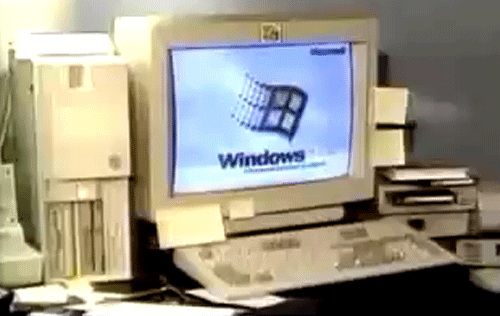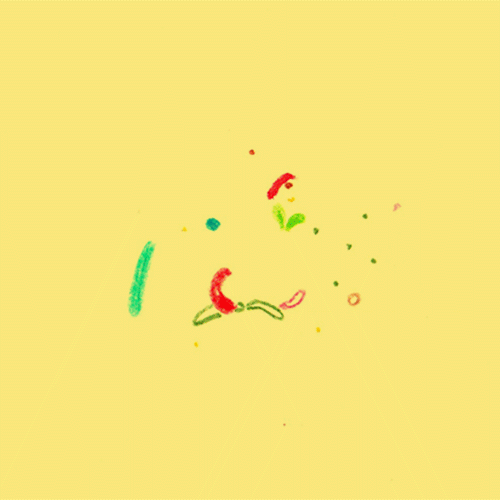GIF by author
Were it the JPEG, WAV, CSV, DOC, PDF, MPG, or ZIP, then marking the occasion of a file format’s birthday might seem a bit absurd. They all allow for rather exciting things to happen within and beyond our screens. Society wouldn’t be in the same place without them. It might be outside, breathing some fresh air.
It’s an evolutionary story, the GIF’s, that makes it worth retelling and toasting. Cartwheeling through its years, from floppy disks to data farms, all the while light on disk space and never insisting on more than 8 bits per pixel. The GIF has stayed alive; it’s designed, of course, to just keep looping.
Videos by VICE
People are still freaking out about the GIF’s pronunciation, which I will gladly lob a : The creator’s intention might have been to use a soft G, or ‘jif.’ That was made quite clear when he snagged his Webby three weeks ago, but I’m still always going to use the hard G. Call it disrespect. I’ll call it endearing, or, how I grew up pronouncing it. It’s how language works too. Everything evolves. It’s survival.
Survival’s been rough though. A patent fight between Unisys and CompuServe erupted over the format in 1994, nine years after Unisys patented the technology behind it, known as the Lempel-Ziv-Welch (LZW) lossless data compression technique. In 1987, CompuServe used the technology to give birth to the GIF, replacing their clunkier, earlier format, RLE, which was only black and white. The official release date of the 87a format, as it was then called, was June 15, 1987.
The GIF had a leg up on lots of formats, like the ones PCX and MacPaint used, namely that it could be downloaded much faster over a slow modem. Also cool: a later version of the GIF would offer an interlacing feature, which stored image scan lines out of order so that that even a partially downloaded image was somewhat recognizable. If the GIF you clicked on isn’t the right one, you could abort the download before it was finished. This was superior to the other popular format on the early web, XBM, which was also, dismally, only black and white. Also, it wasn’t animated.

GIF News, an online newsletter that was distributed every 60 days or so through BBSes between 1988 and 1993, was one of the first notable projects to utilize the format. Via: Know Your Meme
The GIF didn’t just survive. It survived, giving rise to new subcultures, art, economies (see our reporting, for instance, on Jonah Peretti, JeromeLOL, Paper Rad.) Last year GIF—by now a verb too—was crowned “word of the year” by the Oxford University Press, which said it had evolved into “a tool with serious applications including research and journalism.” (NB: this was the American wing of OUP, not still.)
Enough though. I’m ruining the GIF’s birthday. To celebrate, I wanted to do something a little more thoughtful and corny, than last year’s tacky and typical display. So since we’re both 26, I just decided to look back at the most important things that happened in each of the years of our lives, with the help of my favorite file format. Happy birthday, Gif.
1987
Being born
1988
James Hansen tells the US Senate about global warming.
1989
Loma Prieta / World Series Earthquake
1990
1991
The Super Nintendo Entertainment System is released in North America.
1992
93 ’til Infinity
1994
1995
1996
Tamagachi pets hit shelves.
1997
1998
1999
US state quarters program begins.
2000
2001

Barry Bonds hits 73 home runs, the most per single season in MLB history.
2002
2003
I met a life long friend, that taught me the ways of the GIF.
2004

Facebook is launched.
2005
Hurricane Katrina
2006
Pluto is no longer a planet.
2007
2008
Taco Bell unveils its Volcano Menu
2009
2010
WikiLeaks publishes ‘Collateral Murder.’
2011
Arab Spring
2012
2013



















